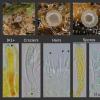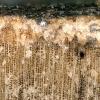
13-01-2026 07:57
 Danny Newman
Danny Newman
cf. Bombardia on indet. decorticate woodAppalachia

11-01-2026 20:35
Hello.A very tiny pyrenomycete sprouting sparsely

13-01-2026 10:13
 Danny Newman
Danny Newman
Cordieritidaceae sp. on indet. wood w/ Hypoxylon s

13-01-2026 07:28
 Danny Newman
Danny Newman
Chlorociboria glauca on indet. decorticate logThe

13-01-2026 07:14
 Danny Newman
Danny Newman
Neodasyscypha cerina on indet decorticate logThe S

13-01-2026 09:10
 Danny Newman
Danny Newman
Dasyscyphella chrysotexta on indet. decorticate ha

13-01-2026 08:43
 Danny Newman
Danny Newman
Tricladium varicosporioides on indet. decorticate

13-01-2026 08:49
 Danny Newman
Danny Newman
Coccomyces sp. on fallen Rhododendron leavesPretty

12-01-2026 22:02
Ethan CrensonHello all, I am hoping someone will have some ins

13-01-2026 07:51
 Danny Newman
Danny Newman
Atrocalyx sp. on indet. herbaceous stemAppalachian



Was the substate exposed, a still-attached branch? Or on the moist gorund?
The MLZ reaction of hairs and exciple is used in Huhtinen's key as a character but one must know that it is not at all shown in Lugol.

Thanks a lot for your messages!
I should have mentioned that, actually these are collections from the Suffolk (Brandon, UK). I am in Cambridge for work at the moment, that is why I do not have access to my usual microscope and reagents.
I will try my best to save some samples for further observations on rehydrated samples (still better than nothing I guess) when I am back to France.
I can confirm this was coniferous wood (picture enclosed). It was on the ground, and quite rotten already. Thanks for the tip regarding the use of Melzer vs Lugol for reaction with hairs, I was not aware of that.
I will go back there and see if I can collect older specimens to do more observations, including a more careful look at the resin and to measure hairs.
Cheers,
Edouard


